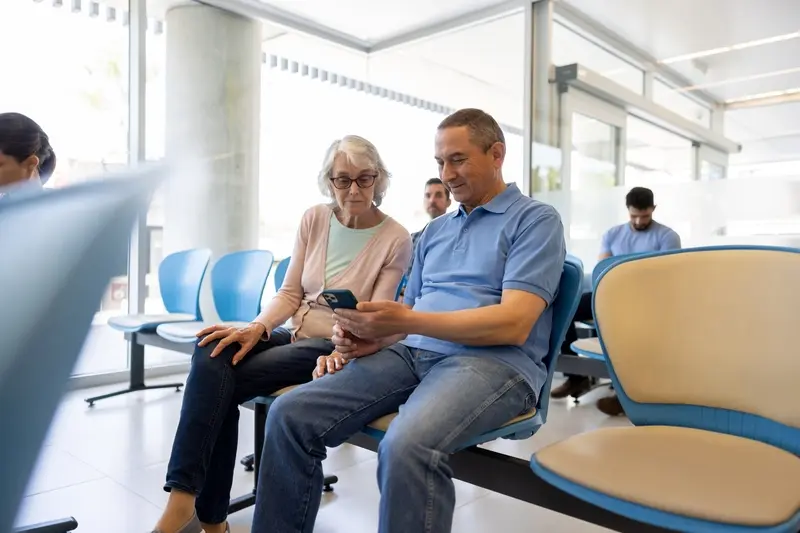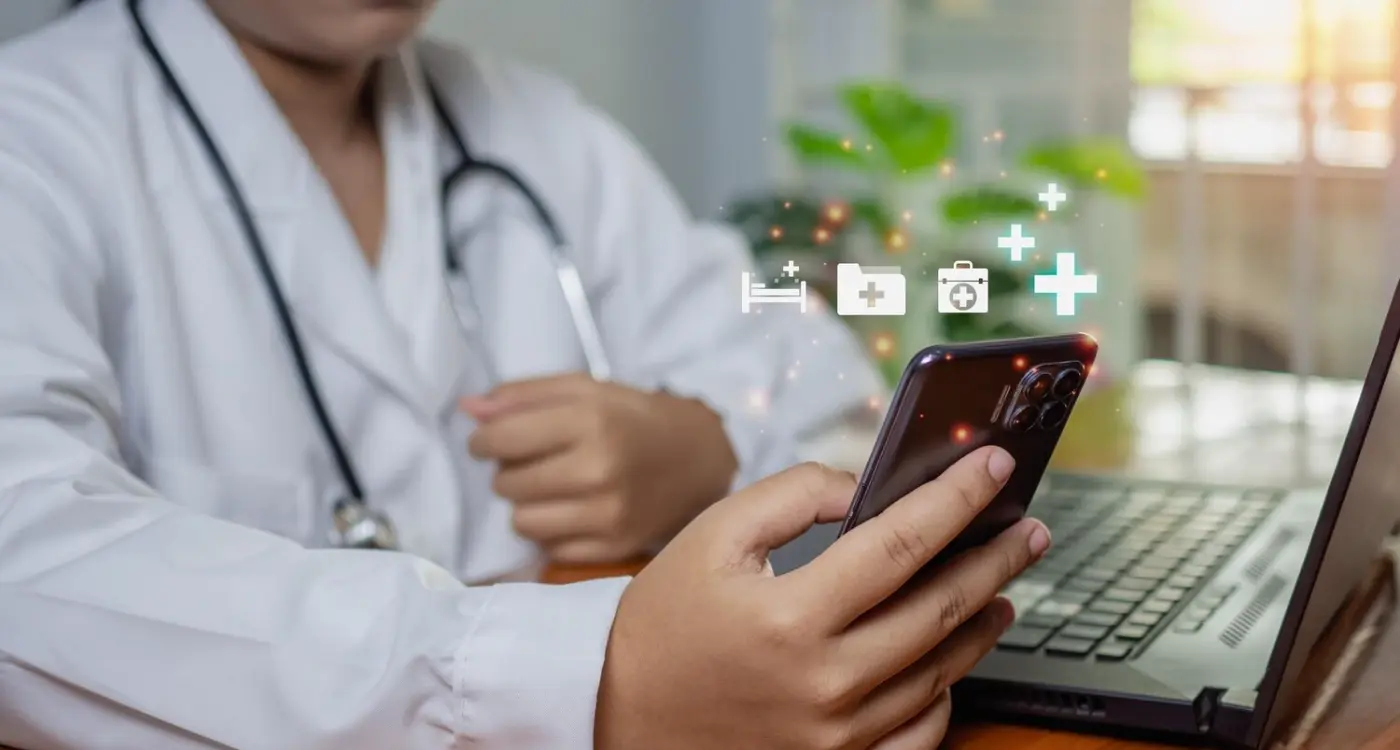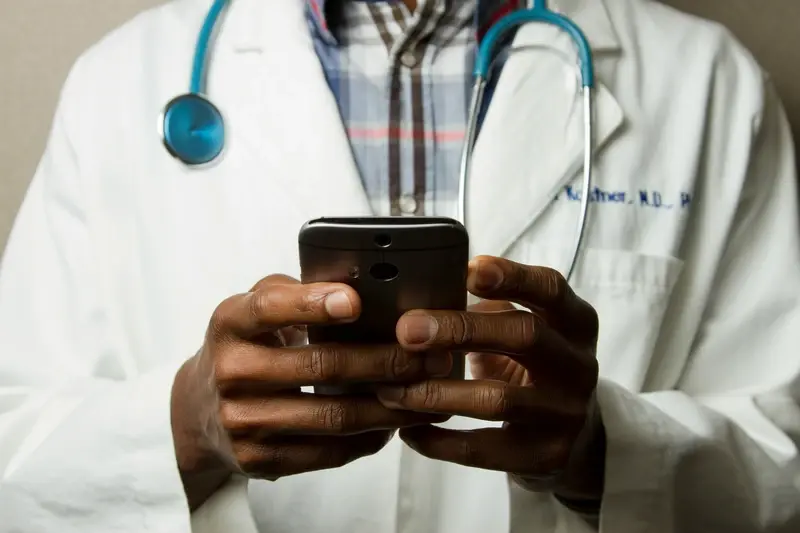What Do You Need to Know About Building GDPR-Compliant Healthcare Apps?
Every minute, healthcare apps process millions of pieces of sensitive patient data—from heart rate readings to prescription details to mental health assessments. Yet many developers don't realise that a single GDPR misstep could result in fines of up to 4% of annual turnover or €20 million, whichever is higher. That's not just a slap on the wrist; that's business-ending territory for most companies.
Building healthcare mobile apps isn't just about creating something that works—it's about creating something that protects people's most private information whilst still delivering the medical benefits patients need. The challenge is that GDPR compliance isn't something you can bolt on at the end; it needs to be baked into every decision from day one.
The cost of getting GDPR wrong in healthcare isn't just financial—it's the trust of patients who've shared their most vulnerable moments with your app
This guide will walk you through everything you need to know about building GDPR-compliant healthcare apps. We'll cover the technical security measures that actually matter, how to handle patient consent properly, and the often-overlooked details around third-party integrations that can make or break your compliance efforts. Whether you're building your first medical app or you're a seasoned developer looking to strengthen your approach, this guide will give you the practical knowledge you need to get it right.
Understanding GDPR and Healthcare Apps
GDPR—the General Data Protection Regulation—sounds scary, doesn't it? I'll be honest, when it first came into effect I had more than a few sleepless nights wondering if we'd covered all our bases with existing projects. But here's the thing about GDPR and healthcare apps: it's not actually trying to make your life difficult. It's trying to protect people's most sensitive information, which in healthcare means everything from your heart rate to your mental health records.
What Makes Healthcare Apps Different?
Healthcare apps handle what GDPR calls "special category data"—basically the really sensitive stuff that could seriously impact someone's life if it got into the wrong hands. We're talking medical records, genetic information, biometric data, and anything related to physical or mental health. Unlike your average shopping app, healthcare apps can't just collect whatever data they fancy; they need proper legal grounds and rock-solid security.
The Reality Check
Here's what I've learned from years of building these apps: GDPR compliance isn't a checkbox you tick at the end of development. It needs to be baked into every decision from day one—how you collect data, where you store it, who can access it, and how users can control their information. Get this wrong and you're looking at fines that could sink your entire project before it even launches.
Patient Data Types and Privacy Requirements
When you're building healthcare mobile apps, you'll be dealing with some of the most sensitive information imaginable—and I'm not just talking about the obvious stuff like medical records. Patient data comes in many forms, and each type has its own privacy requirements under GDPR that you need to understand before you write a single line of code.
What Counts as Patient Data?
The scope of patient data protection goes way beyond what most people think. Yes, medical diagnoses and treatment records are protected, but so are things like appointment bookings, fitness tracking data, and even the simple fact that someone uses your healthcare app. GDPR classifies health data as a special category of personal information, which means stricter rules apply across the board.
| Data Type | Examples | Privacy Level |
|---|---|---|
| Medical Records | Diagnoses, prescriptions, test results | Highest |
| Biometric Data | Heart rate, blood pressure, sleep patterns | High |
| Personal Identifiers | NHS numbers, insurance details | High |
| Usage Data | App interactions, login times | Medium |
Meeting GDPR Requirements
The regulation demands that you have explicit consent for processing health data—not the kind of blanket permission that works for other apps. Patients must understand exactly what data you're collecting and why. You'll need to implement data minimisation principles, meaning you only collect what's absolutely necessary for your app's function.
Always document your legal basis for processing each type of patient data. This isn't just good practice—it's a GDPR requirement that could save you during an audit.
Technical Security Measures for Medical Apps
Building a secure healthcare app isn't just about ticking boxes—it's about protecting real people's most sensitive information. I've worked on medical apps where a single security flaw could mean someone's mental health records or cancer diagnosis ending up in the wrong hands. That's not something you want to explain to your users or the ICO.
The foundation of any secure medical app starts with encryption. You need end-to-end encryption for data in transit and at rest. Think of it like putting your data in a locked box that only the right people have keys to. But here's where many developers get it wrong—they assume basic SSL certificates are enough. They're not.
Core Security Requirements
Your healthcare app needs multiple layers of protection working together. Two-factor authentication should be mandatory, not optional. User sessions need to expire after periods of inactivity—usually 15 minutes for medical apps. And please, don't store passwords in plain text; I've seen this mistake more times than I care to count.
- AES-256 encryption for all stored data
- TLS 1.3 for data transmission
- Multi-factor authentication
- Regular security patches and updates
- Secure API endpoints with rate limiting
- Database access controls and monitoring
Access Controls and Monitoring
Role-based access control means different users see different things. A receptionist shouldn't access the same patient data as a surgeon. You also need comprehensive audit logs—who accessed what data, when, and why. These logs aren't just for compliance; they're your early warning system for potential breaches.
Regular penetration testing isn't optional for healthcare apps. Get external security experts to try breaking your app before the bad guys do.
User Consent and Data Collection Practices
Getting user consent right is where most healthcare app development projects stumble—and I've seen this happen more times than I care to count. You can't just throw up a quick "accept all" button and call it a day when you're dealing with patient data protection. GDPR demands that consent be freely given, specific, informed, and unambiguous. That means users need to understand exactly what they're agreeing to before they tick that box.
Designing Clear Consent Flows
Your consent mechanism needs to be crystal clear about what data you're collecting and why. Pre-ticked boxes are absolutely forbidden under GDPR—users must actively opt in to data processing. For medical app security, this becomes even more critical because you're handling sensitive health information that could seriously impact someone's life if misused.
The key to GDPR compliance isn't just meeting legal requirements—it's about building genuine trust with your users by being transparent about how their most personal data will be used
Granular Consent Options
Don't bundle everything together into one massive consent request. Break it down so users can choose what they're comfortable sharing. Maybe they're happy for you to process their basic health metrics but not their location data—that's their choice to make. Healthcare mobile apps that respect user autonomy from the start tend to see better long-term engagement because users feel more in control of their personal information.
Data Storage and Processing Compliance
When I'm working with healthcare clients, one of the biggest challenges we face is figuring out where and how to store patient data safely. The rules around this are pretty strict—and for good reason! Under GDPR, you can't just stick health information anywhere you fancy; it needs to be stored in specific ways that protect people's privacy.
First up, you need to think about where your data lives. If you're storing patient information in the cloud (which most apps do these days), that cloud provider must be based in the EU or have proper agreements in place. You can't just use any old server farm in a country that doesn't follow European privacy rules.
Processing Rules You Can't Ignore
The processing side is where things get a bit technical. Every time your app does something with patient data—whether that's saving it, sharing it, or even just displaying it on screen—GDPR considers that "processing." You need a legal reason for each type of processing, and you must document what you're doing and why.
One thing that catches people out is data minimisation. You can only collect and keep the health information you actually need; no storing extra bits "just in case" you might need them later. If you don't need someone's full medical history to book an appointment, don't ask for it.
Third-Party Integrations and Vendor Management
When building healthcare mobile apps, you'll almost certainly need to work with third-party services—payment processors, cloud storage providers, analytics tools, or medical device integrations. Here's the thing though: every single one of these connections can become a GDPR compliance nightmare if you're not careful about how you manage them.
I've seen too many healthcare app development projects stumble at this stage. You spend months getting your own patient data protection measures spot-on, then realise your payment provider is storing user data in a non-compliant way. That's a problem that can sink your entire project.
Choosing GDPR-Compliant Vendors
Before integrating any third-party service, you need to check their GDPR compliance documentation. Look for Data Processing Agreements (DPAs) and make sure they're willing to sign one with you. Any vendor handling patient data must agree to process it according to your instructions only—they can't use it for their own purposes.
Always maintain a register of all third-party integrations in your healthcare app, including what data they access and their compliance status. This makes auditing much easier later.
Managing Data Flows
Map out exactly what patient data flows to each third-party service and why. Can you minimise this? Often you can achieve the same functionality whilst sharing less sensitive information, which reduces your compliance burden significantly.
Testing and Auditing Your Healthcare App
Right, so you've built what you think is a GDPR-compliant healthcare app—but how do you actually know it works as intended? Testing isn't just about checking if buttons work or forms submit properly; when we're talking about medical data, we need to go much deeper.
Security Testing That Actually Matters
Start with penetration testing. Get someone to try and break into your app—seriously. I always tell clients this feels scary at first, but it's better to find vulnerabilities now than after you've launched. Test your encryption, check if data can be accessed without proper authentication, and make sure your API endpoints aren't leaking information they shouldn't.
Don't forget about user access controls either. Can a patient see another patient's records? Can they delete data they shouldn't be able to? These sound like obvious things to check, but you'd be surprised how often they get missed.
Regular Compliance Audits
Set up regular audits—quarterly works well for most healthcare apps. Document everything: what data you collect, where it goes, who can access it, and how long you keep it. GDPR regulators love documentation, and frankly, so do I. It shows you're taking this seriously and not just ticking boxes.
Conclusion
Building GDPR-compliant healthcare apps isn't something you can just bolt on at the end—it needs to be baked into every decision from day one. I've seen too many teams try to retrofit compliance after the fact, and it's painful, expensive, and frankly quite stressful for everyone involved.
The thing about healthcare app development is that you're dealing with some of the most sensitive data imaginable. Patient information, medical records, health metrics—this stuff matters deeply to people. Get it wrong and you're not just facing hefty fines; you're potentially damaging lives and destroying trust that takes years to rebuild.
But here's what I find encouraging: when you approach GDPR compliance properly from the start, it actually makes your app better. The security measures protect your users, the consent processes build trust, and the data handling practices create cleaner, more efficient systems. Win-win really.
Medical app security doesn't have to be overwhelming if you break it down into manageable chunks—technical safeguards, proper consent mechanisms, secure storage, careful vendor selection, and regular testing. Each piece builds on the others to create something robust and trustworthy.
Patient data protection is your responsibility, but it's also your opportunity to show users that their privacy truly matters to you.
Share this
Subscribe To Our Learning Centre
You May Also Like
These Related Guides

What Makes Patients Trust A Medical App?

How Do I Build an App for Healthcare That Patients Trust?



